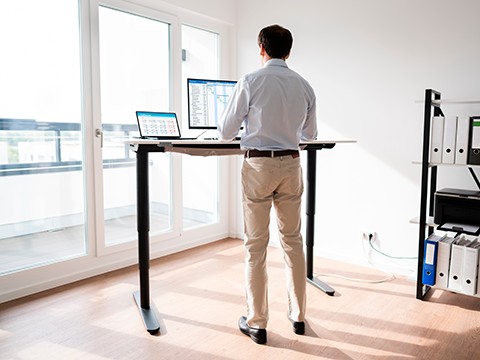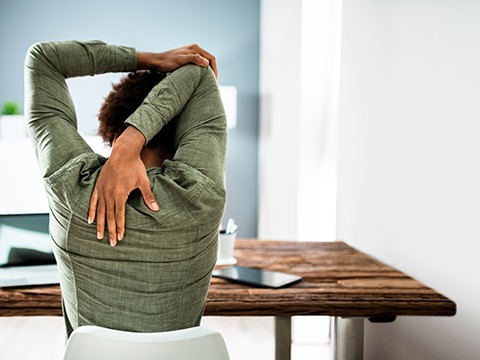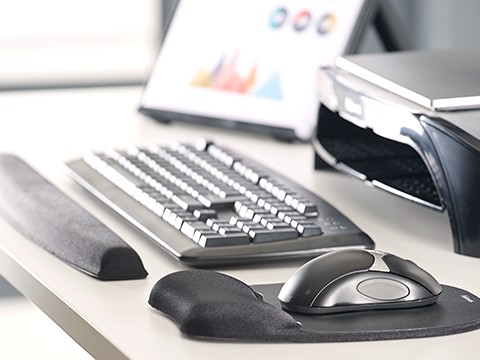6 Tips for Better Posture at Work
Good posture has wide-ranging benefits on health and well-being. Poor posture can lead to several health problems including back, neck, spine, organ, muscle and joint aches and pains as well as fatigue. It has also been shown to affect mood, sleep, and is associated with depression.

1. Stick to a neutral position
The neutral position is one that our bodies adopt naturally. It should be a comfortable position and one that is never awkward.
2. Work in the power zone
The power zone is sometimes known as the handshake zone. It’s the area you’d feel comfortable reaching out to in a handshake. Extending beyond this to reach for your mouse, or to reach up to shelves, for example, takes you out of the zone and reduces your ‘power.’

3. Avoid sitting and staying static for prolonged periods
The human body isn’t meant to be still or sitting for long periods of time. Any sitting position, even an easy one, can be tiring after a point. If you force your musculoskeletal system into stillness, you’ll soon feel fatigued, so make time for stretching, standing up and moving. A Sit-Stand desk can eliminate the static nature of sitting at a desk continuously.

4. Reduce repetitive motions
Repetition of a certain motion will put repeated strain on the same muscle groups. For those who use computers, the strain is most often felt in the upper body. Using ergonomic devices and accessories can help to avoid repetitive strain injury. Taking a workstation assessment could help eliminate the cause of your pain.

5. Maintain alignment of your body
Experts advise distributing your body weight evenly to the front, back and sides of the feet, when standing (spine-health.com). When sitting on the office chair, ensure it is one that suits the type of work you undertake, is adjusted to your comfort and support while contributing to good posture. Your elbows and knees should be positioned at a right-angle, which can be achieved with the use of a footrest and height adjustable chair / desk.

6. Use posture friendly and ergonomic equipment
Ergonomic office chairs, desks and desk accessories are designed to support proper posture and comfort and should be used to their full potential. Sit-stand desks encourage movement while complementing different working preferences for people who either prefer to work sitting down or standing up. Taking a workstation assessment could help eliminate the cause of your pain.



